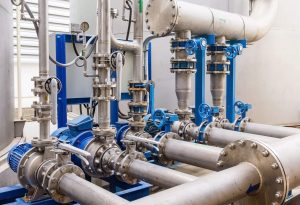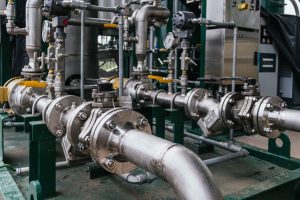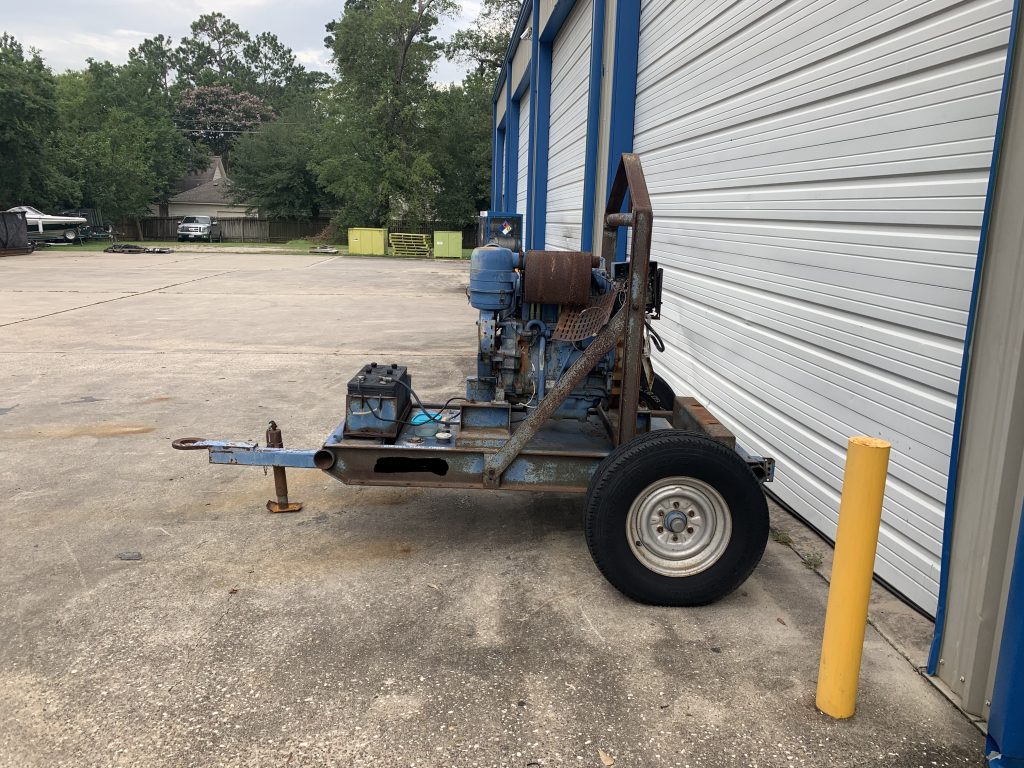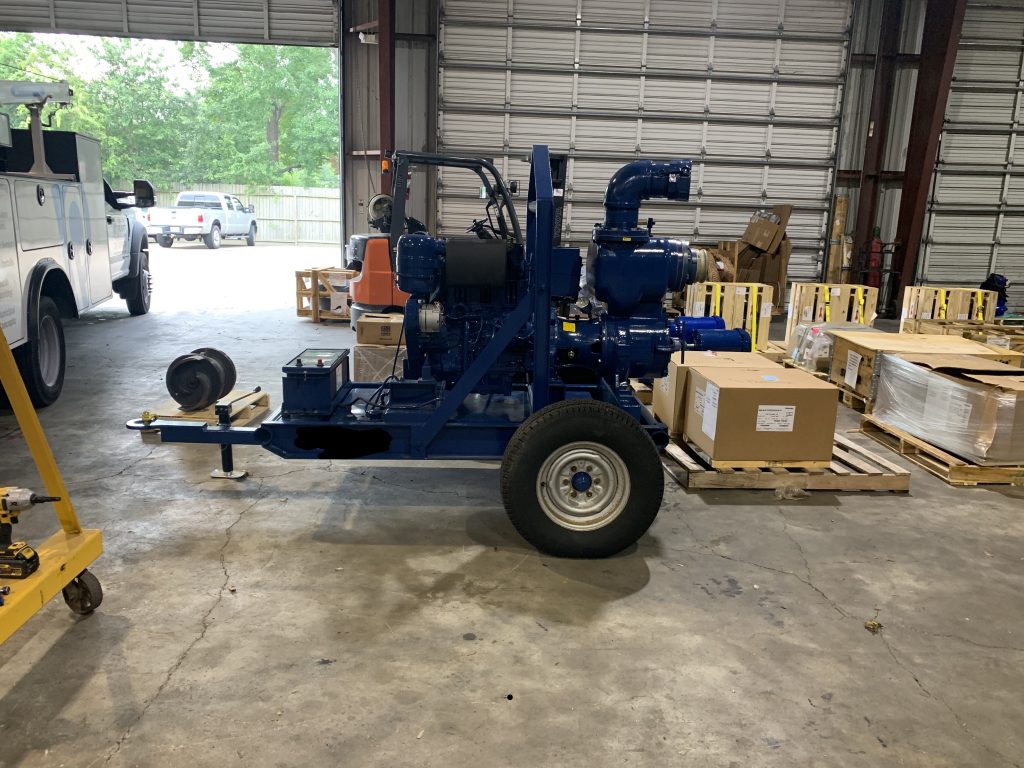The use of Hydroflo pumps and other water pumping systems is relatively standard across the majority of industrial and commercial facilities. However, in most circumstances, basic operations require the pumping of cold water, a natural lubricant for the pump system, and only low-pressure components.
When a company requires the pumping of hot water, it needs to address viscosity and vapor pressure changes. The differences between water at 68 degrees Fahrenheit and 176 degrees Fahrenheit seem minimal in measurement. Still, the composition of hot water makes it lighter and less lubricating while drastically increasing the system’s pressure because of vaporization. The changes only increase the increasing water temperature, which means that companies must understand how these changes affect the pumping system and what changes need to occur to prevent damage or early deterioration of pump components.
The Effect of Heat on Pumps

Most pump operators are familiar with the net positive suction head available for a specific pump. However, do not trust the stated NPSHA on specific vertical turbine pumps without first purchasing an NPSH test for the exact operating conditions. While a pump manufacturer may claim an NPSH, the numbers are not guaranteed without a confirmation test because of variation in uses and how depth and temperature can impact different pump components.
Hot water systems have an increased risk of cavitation, which is the rapid change in water pressure leading to metal wear. As liquid accelerates through the suction pipe, bubbles form as the pressure drops. The system forces the water from the line to the impeller eye. The pressure suddenly increases, forcing the bubbles to collapse, creating a tremendous amount of localized pressure and causing minor abrasions on the metal propeller. A stainless steel impeller has more resistance to these moments of cavitation.
Expansion and Pipe Components
The majority of centrifugal pumps can handle the temperature and water fluctuations of 250 degrees Fahrenheit. Still, as temperatures rise toward 300 degrees Fahrenheit, these systems struggle to keep up with the dramatic expansion. When working with temperatures above 250 degrees Fahrenheit, professional organizations recommend using Hydroflo pumps with centerline-supported casing.
Using systems with specialized casings allow for thermal expansion from its center of rotation. The allowance for expansion out from the center means that components maintain the same axis throughout the pressure and temperature changes. Because these systems are not fixed to the pump base vertically, pump owners experience fewer alignment problems than other casing designs.
The Necessity of Balance

For operations above 220 degrees Fahrenheit, a balanced seal is necessary for all pumps, even submersible turbine pumps. The balance ensures the proper operation at higher temperatures, but even correct seal usage is no match for temperatures above 250 degrees Fahrenheit. When reaching such temperatures, companies should consider Viton, Ethylene Propylene, Aflas, or Kalrez. However, while some of these materials will help balance the system, anytime water reaches above 250 degrees Fahrenheit, the system requires additional cooling. While a cooling jacket can help, a flush is better.
Avoiding Bearing Failure
Some pump operators worry about the bearings in hot water applications, but the added concern is unwarranted with most systems. The obsession with cooling the bearing frame can often cause the damage operators want to avoid. Excessive cooling can cause condensation and contamination of the lubricating oil, which leads to early bearing failure. To prevent such damage, only use precautionary cooling measures in operations over 500 degrees Fahrenheit.
The Importance of Pump Selection
Despite the increased concern for hot water pumping, the process is not complicated. Selecting the appropriate Hydroflo pumps, cooling system, mechanical seals, and pipes will ensure prolonged operations. When selecting and customizing your pumping solution, the primary consideration is water’s changing properties in increasing temperatures. Understanding the viscosity and pressure of heated water can prevent system failure, which equates to a safer work environment for all involved.
There is no need to decide on a pumping solution on your own. A Zone Industries representative can help you calculate your company’s needs, ensuring that the pump can handle your hot water operations. Instead of wondering about pump design specifications, contact Zone Industries to go over your system requirements, allowing experts to assess your process and needs. With a consultation and system assessment, you can be confident in the final installation and operation.
Understanding the Effects of Hot Water on a Pump System | Zone Industries
The process of industrial and commercial manufacturing requires the use of several different pumps, including AllFlo pumps. It is challenging to keep track of the various types of pump systems and applications. However, this article aims to identify 15 popular systems and provide a brief overview of each.
1. Centrifugal Pumps
A centrifugal pump has one or more impellers and is useful in many different applications. These pumps have the highest flow rates and can handle clean or dirty liquids. However, these devices will not work well for thicker liquids, like oil.
2. Regenerative Turbine Pumps
While a part of the same classification, regenerative turbine pumps are not considered a proper centrifugal pump. However, these models still use the same kinetic principle, but most are single stage. These devices’ best applications are small commercial boiler systems, like those found in dry cleaners or bakeries.
3. Submersible Pumps
If you require deep water or sewer operations, ask All-Flo Pump distributors about submersible pumps. These tools have an encased and protected motor with a single-stage pump, allowing the entire device to operate while submerged.
4. Vertical Turbine Pumps
A vertical turbine pump is versatile. While the design’s purpose is to operate in a bore-hole well, these sophisticated vertical shaft pumps can also pump from an intake structure, open reservoir, river, or tank. You can also use the pump as a booster pump mounted to the inside of a barrel.
5. Positive Displacement Pumps
While you can search for systems with the right All-Flo pump parts, you might find more luck working with a positive displacement pump. The positive displacement pump doesn’t rely on impellers to propel liquids through the system. Instead, it rotates or uses reciprocating parts to transfer materials.
6. Flexible Impeller Pump
A flexible impeller pump is likely what you need when a positive displacement pump is not enough and requires extra propulsion. The flexible impeller conforms to a displacement pump’s parts, allowing thin liquids’ easy transportation, even those containing some solids.
7. Piston Pumps
Piston pumps use pistons to create high pressure. These pumps provide adequate pressure for wash down services in oil production. Many people are familiar with these systems even if not aware of the name because they are used for pressure washing.
8. Lobe Pumps

When pumping viscous liquids containing soft or fragile liquids, lobe pumps provide the right amount of pressure. These pumps use two shafts to drive the lobes, which mesh but never touch, to pump the liquids gently. The food, beverage, and pharmaceutical industries find these devices most useful.
9. Gear Pumps
Like a lobe pump, a gear pump also uses two meshing gears, but the types are both internal and external. These pumps are not suitable for transporting abrasive liquids or those containing solids. The device is best for clean oils and other high viscosity liquids.
10. Diaphragm Pumps
Like some AllFlo pumps, diaphragm pumps use a reciprocating diaphragm driven by a fluid drive, solenoid, or mechanical drive. These tools also use inlet and outlet check valves. The diaphragm pump is useful in plants because of the varying materials it can handle, from those containing solids to corrosive substances.
11. AODD Pumps
If your pumping operation is not near electricity, then you may need to use air-operated systems instead. An AODD pump runs on air and is useful in construction projects, like concrete pouring.
12. Well Pumps

If you are more interested in rural operations, like irrigation, you may want to invest in a well pump. The well pump is a vertical turbine pump and is used in bore-hole applications.
13. Trash Pumps
A trash pump is a dewatering pump. It can be self-priming or submersible, and the design allows the unit to handle rocks and other solids. These pumps often find use in mining or construction operations.
14. Self-Priming Pumps
Self-priming pumps offer an advantage because they do not need to be submerged. These pumps have motors that rest above the reservoir and do not require external priming or foot valves.
15. Magnetic Drive Pumps
When looking for AllFlo pumps, consider the temperature and sealing issues of the substance. Magnetic drive pumps are sealless, which is advantageous when dealing with non-viscous or heat transfer fluids.
What type of pumping solution do you need? Contact a Zone Industries representative to discuss your business and operations.
Overview of 15 Popular Pumps, Including AllFlo Pumps | Zone Industries
When discussing Hydroflo Pumps, most business owners understand that you are talking about one of the most dependable manufacturers on the market. The company specializes in centrifugal pumps, but more specifically, submersible and vertical turbine pumps. These pumps are useful tools in several manufacturing or producing markets, like farming, mining, and other industrial models. Beyond commercial production, turbine pumps are helpful in municipal applications as well.
Vertical pumps tend to work better in specific settings, but it isn’t easy to know if it suits your needs without understanding the pump. To get the most use out of a vertical pump, you need to understand the intent of the design and its mechanics. The remainder of this article will help inform your future purchasing decision.
Defining the Vertical Turbine Pump
The centrifugal pump known as the vertical pump, deep well, or lineshaft pump, transports water from underground wells and reservoirs. While submersible turbine pumps are also useful in this regard, a vertical pump is often more practical because of its design. The primary difference between a submersible and a vertical pump is the placement of the motor. Submersible systems have the motor housing on the bottom of the pump, which is then placed in the water. While the housing is waterproof, damage can occur, especially when pumping from deeper water sources.
The vertical turbine pump, alternatively, has the motor mounted above ground, which is then connected to the impellers through a long vertical shaft. The design of the vertical system means that the engine remains dry and free of potential risk, which is why many deep well operators prefer to use the vertical structure. The mechanics of the system also make the vertical pump more customizable than other options on the market, which is another plus for business owners.
Learning How It Works
The vertical turbine systems through Hydroflo Pumps are versatile and customizable. Depending on your needs, you can choose a diesel engine that drives the system through an angled drive, or you can opt for an AC electric induction motor. Beyond engine selection, you can also choose the number of impellers for your system. While every vertical propeller requires at least one rotating propeller to direct water into the bowl or diffuser casing, the number of propellers above that casing is up to the owner.
The impellers work to build water velocity and pressure, helping to propel the liquid from the bottom of a well through the system. The first propeller increases the speed by forcing the water through the suction bell at the base of the pump. The water then enters the diffuser bowl, where velocity energy is transformed into high pressure and directed up the shaft. Depending on the well depth, multiple propellers can help to build more velocity and pressure.
Beyond the impellers and the diffuser bowl, the system uses a spinning shaft to help move water from the pump to the discharge head. The motor, above the discharge head, helps to create the necessary momentum to change the flow direction, pointing it to the discharge pipe.
Understanding the Uses
Companies and municipal services tend to use vertical pumps when submersible pumps are not an option because of flow demands. However, motor placement can also play a role. Some common examples where a vertical pump is more beneficial than a submersible pump would be with bored wells for turf and agricultural irrigation. Industrial plants may also use vertical systems for make-up or fire water demands. Finally, a municipality dependent on groundwater rather than surface water will likely use a vertical pump.
Beyond specific needs, many companies choose vertical pump options because of the versatility of the system. For example, these systems are capable of pumping 50 GPM to 30,000 GPM or higher. Also, the customization and options for multiple stages to generate greater head is often preferable. Companies also appreciate the various placement options for a vertical system: bored wells, open water sources, and even inside barrels. A business can place these pumps in reservoirs, rivers, and other intake structures. By putting it inside a barrel, the operator can increase or decrease the atmospheric pressure of the suction source. Few pumps allow such flexibility.
The vertical turbine systems from Hydroflo Pumps are a versatile setup for specific entities. After learning about the design, purpose, and mechanics of the vertical pump system, it should be easier to decide whether it is right for your needs. If you are still having difficulty choosing a centrifugal pump for your business, then consider contacting a Zone Industries representative for more information. They can learn more about your operations to help pinpoint your company’s specific pumping needs, and can weigh the pros and cons of each pump type with you to find the best option.
How Does a Vertical Pump From Hydroflo Pumps Work? | Zone Industries
Before:

After:



